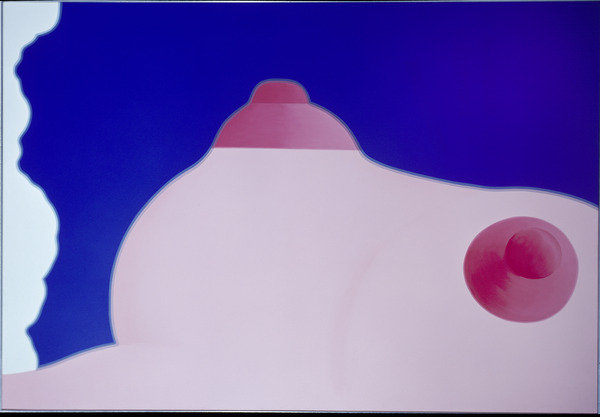Ludwig goes pop
dal 29/9/2014 al 10/1/2015
Segnalato da
29/9/2014
Ludwig goes pop
Museum Ludwig, Koln
The exhibition brings together for the first time around 150 key works by the leading figures of this art movement from all institutions associated with the name Ludwig and in the process expands the historical picture of this world-class private collection.

Curated by Stephan Diederich and co-curated by Luise Pilz
Thanks to Peter and Irene Ludwig, the Museum Ludwig in Cologne holds one of the internationally most significant collections of American Pop Art. In addition to the Cologne holdings, other parts of this collection are preserved at the mumok in Vienna, the Ludwig Forum in Aachen, and the Kunstmuseum Basel, as well as at the Ludwig museums in Budapest, Koblenz, St. Petersburg, and Beijing.
Opening in fall 2014 LUDWIG GOES POP brings together for the first time around 150 key works by the leading figures of this art movement from all institutions associated with the name Ludwig and in the process expands the historical picture of this world-class private collection.
When Peter Ludwig first encountered a Pop Art sculpture by George Segal at MoMA in the mid- 1960s, the collector, who together with his wife had up to then collected chiefly antique and medieval art, was shocked. Shortly thereafter, however, both became enthusiastic collectors of these then-current works. Tom Wesselman’s Landscape No. 4, featuring a Ford driving through a country road in the mountains, was among the first purchases; soon followed key works by Roy Lichtenstein, James Rosenquist, Robert Rauschenberg, and Jasper Johns. These artists belonged to the same generation as the Ludwigs; they represented modern life, and the couple visited many of them directly in their studios.
Many works came to Ludwig from the renowned Scull and Kraushaar collections, a few derived from the holdings of the Darmstadt Wella manufacturer Karl Ströher, who had bought New York insurance salesman Leon Kraushar’s pop collection. In 1968, following documenta 4, the Ludwigs bought works directly from the exhibition, including M-Maybe—A Girl’s Picture by Roy Lichtenstein, Claes Oldenburg’s Soft Washstand, Rauschenberg’s Wall Street, George Segal’s Restaurant Window I, and Richard Lindner’s Leopard Lilly.
The following year the Ludwigs presented their collection for the first time in Cologne, at the then Wallraf-Richartz Museum. The media and public responded enthusiastically to the exhibition, and it attracted around 200,000 visitors. Consequently Pop Art became the Museum Ludwig’s signature tune.
The exhibition will subsequently be shown at the mumok in Vienna. A comprehensive catalogue is being published at Verlag der Buchhandlung Walther König in conjunction with the show.
Image: Tom Wesselmann, Seascape No. 18, 1966/67. 244 x 168 cm, Öl auf Leinwand. Museum Ludwig, Köln © The Estate of Tom Wesselmann/VG Bild-Kunst, Bonn 2014. Foto: Rheinisches Bildarchiv
Anne Niermann / Leonie Pfennig
Press and Public Relations
Tel +49 (0)221 - 221 - 23491
Tel +49 (0)221 - 221 - 23003
niermann@museum-ludwig.de
pfennig@museum-ludwig.de
Press reception: September 30, 11 a.m
Opening: October 1, 7 p.m.
Museum Ludwig
Heinrich-Böll-Platz - 50667 Köln
Hours
Tuesday to Sunday (incl. holidays): 10:00 a.m.–6:00 p.m.
Every first Thursday of the month: 10:00 a.m.–10:00 p.m.
Closed Mondays
Admission
New fees apply as of January 1, 2014:
Adults: €11.00
Discounted ticket*: €7.50
Families: €22.00
Children & young adults under 18: Free to the permanent collection



